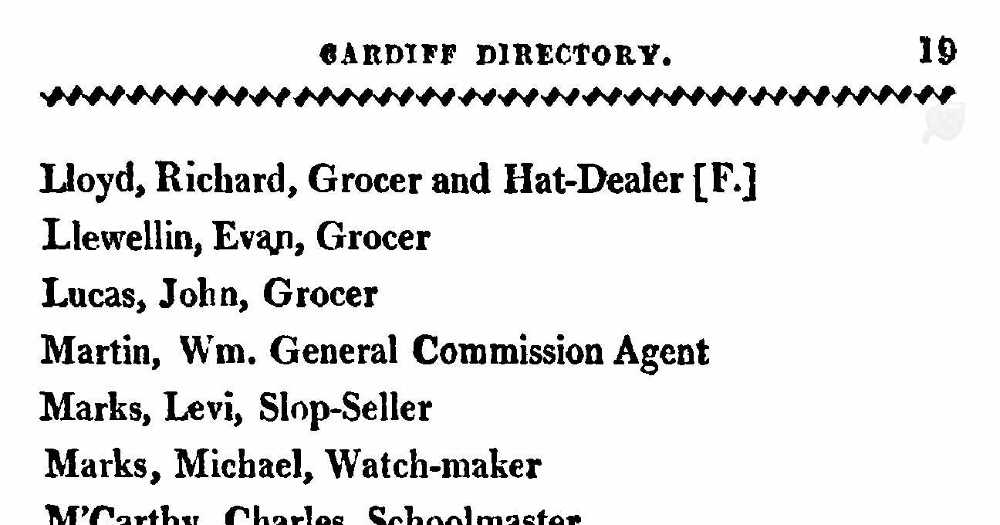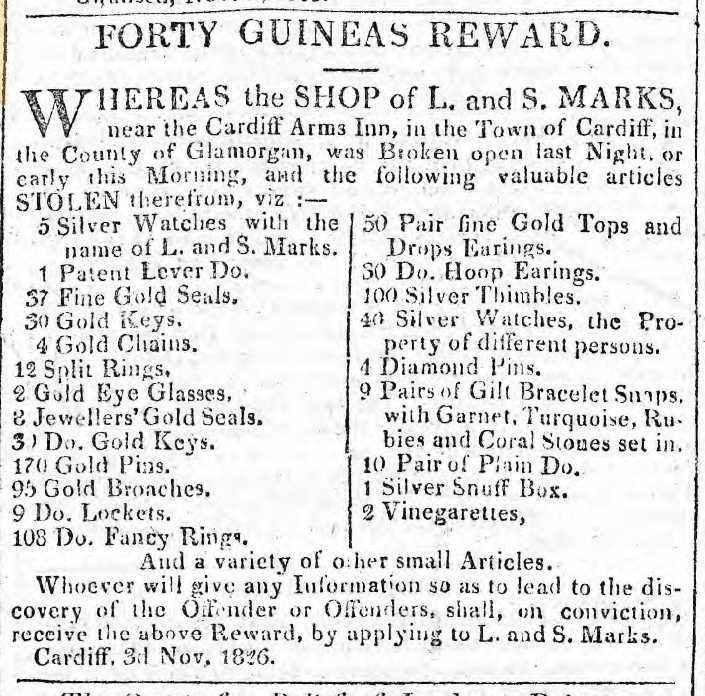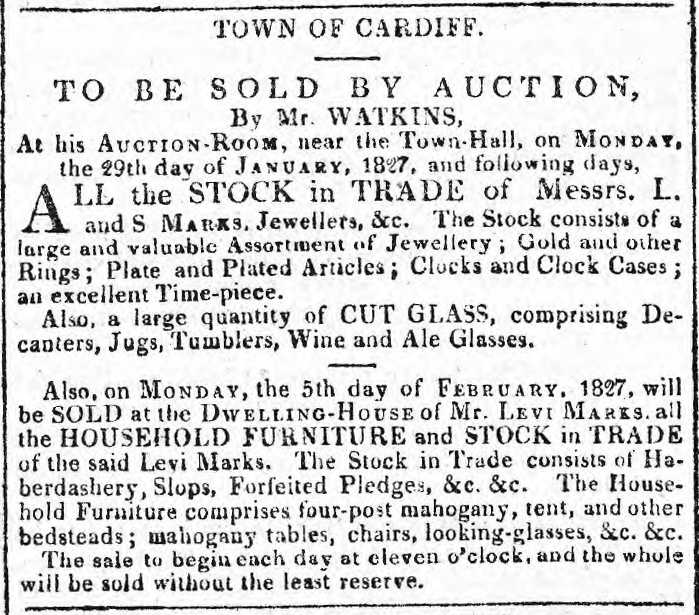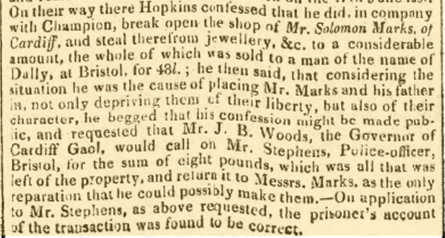Prior to the early 1800s itinerant traders from the older communities at Bristol, Gloucester or Swansea would have passed through, and possibly stayed for a while before moving on.
The origins of the Jewish Community in Cardiff
Early nineteenth century
3.15 Miles
LOCATION: 9 St Mary Street
The origins of the Jewish Community in Cardiff
The origins of an organised Jewish community in Cardiff are comparatively recent.
Before 1800
1813 Cardiff Directory
An 1813 Cardiff directory lists Levi Marks, a slop [readymade garments] seller, and Michael Marks, a watchmaker. Levi had married Judith Solomon, from Portsmouth, and been an enrolled volunteer soldier at Neath after the French invasion of Fishguard in 1796. His children Michael, Rosetta, Mark and Solomon were from Neath and also came to Cardiff.

1813 Directory & Guide to Cardiff, Caerphilly & Llandaff; Publisher: pr. by Thomas Ridd.
Image credit Ancestry.com.
1822
By 1822 Levi was a pawnbroker in St. Mary Street; Michael was in Angel Street and Solomon in Broad Street. Levi formed a partnership with Solomon as watch-makers and jewellers. Following a theft from their premises in 1826 they had to sell up their remaining stock and Levi’s furniture. It was thought to be an inside job but both thieves later confessed. Levi died aged 74 in 1828.

Newspaper clipping advertising a reward for information about the burglary of the Marks shop. From The Cambrian, 11 November 1826.
Image credit The National Library of Wales.

Newspaper clipping about the auction of the Marks business. From The Cambrian, 27 January 1827.
Image credit The National Library of Wales.

Newspaper clipping about the burglars’ confession. From The Cambrian, 8 September 1827.
Image credit The National Library of Wales.
1825 Michael a watch-maker, silversmith, jeweller and pawnbroker
Michael was a watch-maker, silversmith, jeweller and pawnbroker. In 1825, after 16 years in Cardiff, he sold up his shop in Angel Street. The following January he moved to Swansea and married.
Cardiff 1851 map, originally drawn up by the Ordnance Survey in accordance with the Public Health Act.
Reproduced with the kind permission of Glamorgan Archives.
This map shows the location of Broad Street (leading to the castle), Angel Street and the Arcade (off Church Street).
1830 Rosetta was married in Cardiff, to Samuel Marks
In 1830 Rosetta was married in Cardiff to Samuel Marks, a dyer from Middlesex, with Rev Myers from Swansea officiating. By 1835 Samuel was in St Mary Street and in 1851 was at No 3 Arcade, Church Street (off St Mary Street).
1835
By 1835 both Mark and a Samuel Marks are watch and clock makers in Angel Street. Mark is also a clothier in St Mary Street. Mark survived bankrupcy, became an auctioneer, and died in 1871, aged 73. Judith died in 1859, aged 90, and her address was 9 St Mary Street. Solomon died, aged 82, in 1883.
1841 A plaque on the cemetery wall
Plaque outside Highfield Cemetery, March 2018.
Image credit JHASW.
1845
The Chief Rabbi’s Statistical Survey for 1845 records only three “full subscribing members representing nine adult male Jews” but we can expect others who were not full members.
Sources (18) click to show
CONTINUE THE TRAIL
Trail
×
![]()
